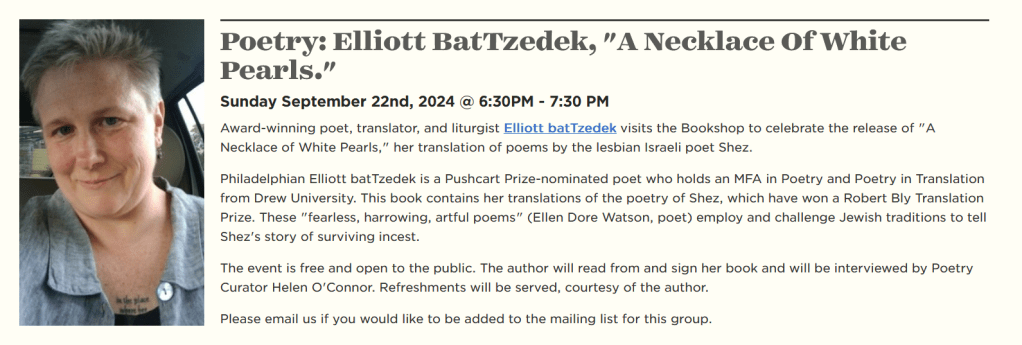I’m pushing ahead with my new manuscript, which is up to 48 pages. I’ve sent it to a few places. Many presses require a minimum of 50 pages, so I have to find at least two more poems inside of the world of this collection. I’ll get there – just hope it is in time for August 31st deadlines.
These four poems are all from the manuscript. I’m particularly pleased with “Wedding Dance,” for keeping a tight structure, and “Ossuary,” for how in it I let myself go into pure association of word and sound. Many thanks to my post-Yetzirah monthly poetry group for showing me where this poem broke down – fixing it was a matter of moving two lines and then wow.
Ossuary
boy do I have a bone to pick with you, bones, so make
no bones about it but rather better bone up on it now
that you’re the rag and bone man, dancing a final
dog and pony show, throw me a bone, I’ll grab hold tight,
as if that were all my life is now, which is today’s
bone of contention
come look close then closer, to see what was bred
in my bones, yes we’ll dig for the bones in it, measure
the skeletons that skulk in my closet, and after give rest
to my weary bones
the doctor says: bones are covered by a thin layer of tissue called the periosteum
knick knack paddy whack the quickest dog
gets the fat off the bone, the slowest suckles
meal out of marrow while my bones
cleaveth to my skin, and to my flesh—
about this, there are most surely no bones but
dem bones, dem dry dry bones
the doctor says: it is the nerves in the periosteum that “feel” bone pain
dying rot that is my bone closet, bitterest
closet where my boners were forced to hide, my want
as dry as a bone coat, mouth crammed so full of bone
dust and sawdust that I’ll never know the taste of what
the preacher said: the good is oft interred with their bones
the doctor says: and for this bone pain there is no remedy
oh tales of blood and bone, the talking bone,
the telling bone, rattling bones, tattling bones,
rolled them bones and took my chance
still Death it was got the bigger half
of my wishbone
fe fi foh fum
Death smells the blood of every one
and grinds their bones to make
his bread, here at bone idle, here
at bone dry, here where you can make
no bones about that









